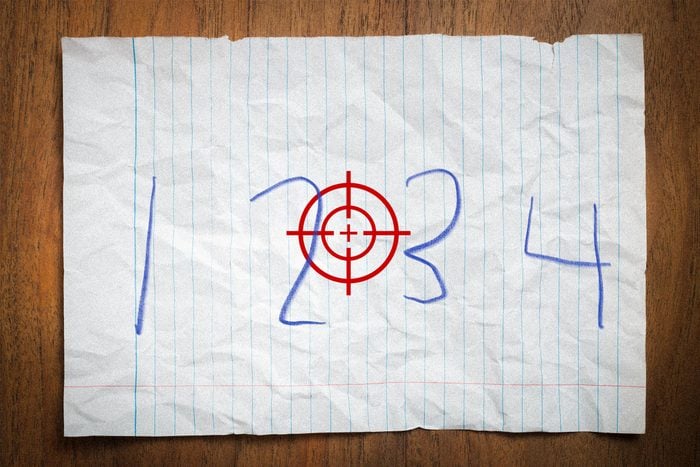Years of Research Finds That Most School Shooters Have 4 Things in Common
Updated: Dec. 21, 2022

Knowing the traits to look for, and how to address them, could help save lives.
After a mass shooting at a school—or any other location—we are left with so many questions: Why was this school targeted? Was there anything anyone could do to stop it? Were there any clues in the shooter’s behavior that might point to why they resorted to this type of violence?
Among those seeking answers are Jillian Peterson, PhD, a psychologist and professor of criminology and criminal justice at Hamline University, and James Densley, PhD, a sociologist and professor of criminal justice at Metropolitan State University. Together they run the Violence Project, a nonpartisan think tank dedicated to reducing violence in society and improving related policy and practice through research and analysis.
Over the course of two years, Peterson and Densley have studied American mass shooters in an attempt to figure out if they shared any common characteristics. The project, which was funded by the National Institute of Justice, the research arm of the U.S. Department of Justice, entailed creating a database dating back to 1966 of every person who shot and killed four or more people in a public place, and every shooting incident at schools, workplaces, and places of worship since 1999. (The year 1999 is significant because that’s when the mass shooting at Columbine High School in Colorado occurred, resulting in the deaths of 12 students and one teacher.)
The idea behind the research was to attempt to identify characteristics shared by school shooters. To carry out the project, Peterson and Densley interviewed incarcerated perpetrators of school shootings and their families, students who planned a shooting but changed their minds, survivors, first responders, and teachers and administrators. They also read media and social media, manifestos, suicide notes, trial transcripts, and medical records associated with these mass shootings. Though there is still so much we don’t know, after years of research, we do know that most school shooters have these four things in common.
Early-childhood trauma and exposure to violence
In their research, Peterson and Densley found that most of the school shooters they studied experienced early-childhood trauma and/or exposure to violence. This included everything from parental suicide to physical or sexual abuse, neglect, domestic violence and/or severe bullying. “The trauma was often a precursor to mental health concerns, including depression, anxiety, thought disorders, or suicidality,” they wrote in an op-ed in the Los Angeles Times.
One of the aims of the research was to help determine not only the common characteristics of school shooters, but also what can be done to help stop them before they take action. For example, Peterson and Densley note that school-based mental health services such as counselors and social workers may help mitigate childhood trauma. In addition, schools can implement a curriculum including positive coping skills, resilience, and social-emotional learning, especially to young boys—according to their data, 98 percent of mass shooters are men.
Another strategy is to be more proactive when it comes to acknowledging childhood trauma. “Those early exposures to violence need addressing when they happen with ready access to social services and high-quality, affordable mental health treatment in the community,” Peterson and Densley wrote. Looking for other strategies to stop school violence? Here are powerful things teachers, parents, and kids are doing to prevent school shootings.
Anger over a recent event, resulting in feelings of suicidality
Nearly every mass shooter Peterson and Densley studied had a specific, identifiable point of crisis in the weeks and/or months before the shooting, which resulted in them becoming angry and despondent. According to the authors, relationship rejection or loss often played a role in the shooter’s life prior to the attack.
But, they also found that in 80 percent of the cases, school shooters communicated to other people that they were in a crisis, whether it was in the form of a significant change in behavior, expressing suicidal thoughts or plans, or discussing specific threats of violence.
“For this reason, all adults in schools, from the principal to the custodian, need high-quality training in crisis intervention and suicide prevention and the time and space to connect with a student,” Peterson and Densley wrote. “At the same time, schools need formal systems in place for students and staff to (anonymously) report a student in crisis.”
Being inspired by other school shooters
Another commonality among school shooters is that they have studied—and may admire—other school shooters. Today, with the 24-hour news cycle, the internet, and social media, it has never been easier for potential shooters to conduct their own research into not only how to carry out a shooting, but also, the specific script to follow to ensure notoriety after the event—even if they end up dying in the process. In other words, school shootings are socially contagious, and in some cases, media coverage of an incident can provide a blueprint for potential future shooters.
So what can parents, teachers, and school administrators do to help spot the next possible school shooter? Instead of threat-assessment teams focused on risk factors, Peterson and Densley explain that “schools need care teams dynamic enough to see opportunities to connect students with needed resources and safeguard them in a wraparound process.”
Moreover, because school shooters seek validation, the authors of the study suggest that schools teach media literacy to help students understand the motivations behind school violence, as well as the extremist propaganda that may prompt it. Finally, Petersen and Densley note that a change in school culture is also required. “Lockdown and active shooter drills send the message that violence is normal when it’s not,” they wrote.
Having the means to carry out an attack
In order to carry out a school shooting, students need access to firearms and ammunition. According to Petersen and Densley’s data, 80 percent of school shooters obtained their weapons from members of their own family, typically parents and grandparents. “Once someone decides life is no longer worth living and that murdering others would be a proper revenge, only means and opportunity stand in the way of another mass shooting,” according to the authors.
One thing schools can do to help with this aspect of school violence is to educate parents and other caregivers about ensuring that all firearms are kept locked up and far away from children. In addition, Petersen and Densley recommend that schools make their property less accessible through visible security measures like metal detectors and police officers.
Many mass shooters have also obtained their weapons through legal avenues. According to a survey by the National Institute of Justice as reported by The New York Times, 77 percent of mass shooters between 1966 and 2019 have bought their weapons legally.
The bottom line is that by looking at the data from studies like the one Petersen and Densley conducted, we can try to find patterns of behavior to help identify potential school shooters before they take action. Here’s one teacher’s brilliant strategy to stop school shootings, and if you’re wondering what you can do, find out how to help shooting victims.
Sources:
- Jillian Peterson, PhD, psychologist and professor of criminology and criminal justice at Hamline University
- James Densley, PhD, sociologist and professor of criminal justice at Metropolitan State University
- Education Week: “What School Shooters Have in Common”
- Business Insider: “School shooters usually show these signs of distress long before they open fire, research shows”
- Los Angeles Times: “Op-Ed: We have studied every mass shooting since 1966. Here’s what we’ve learned about the shooters”
- The New York Times: “What Do Most Mass Shooters Have in Common? They Bought Their Guns Legally”



